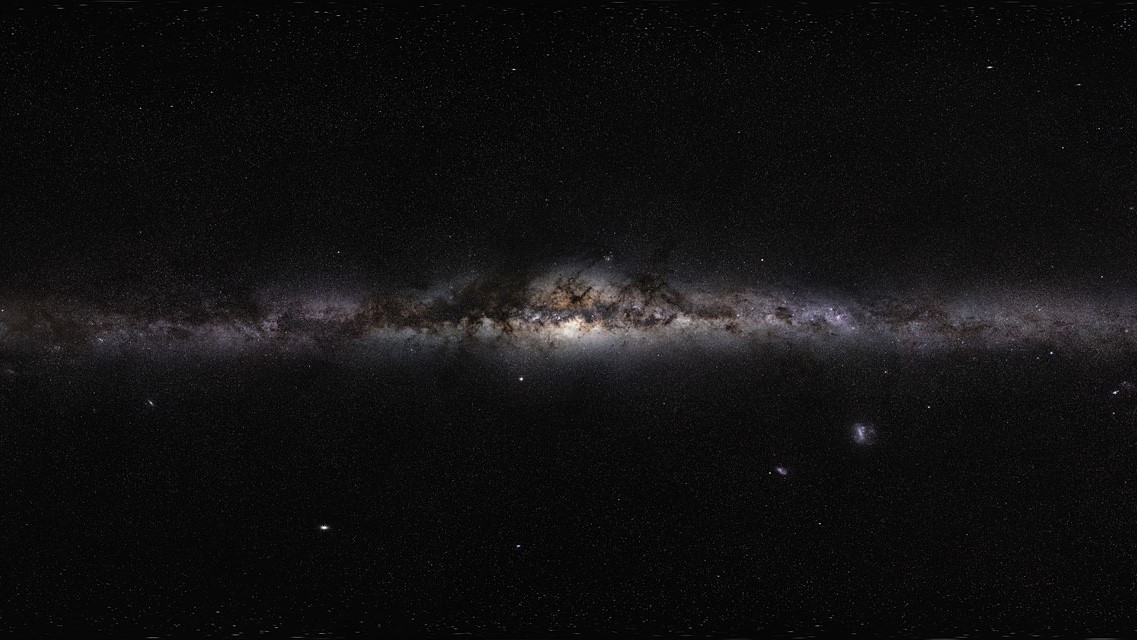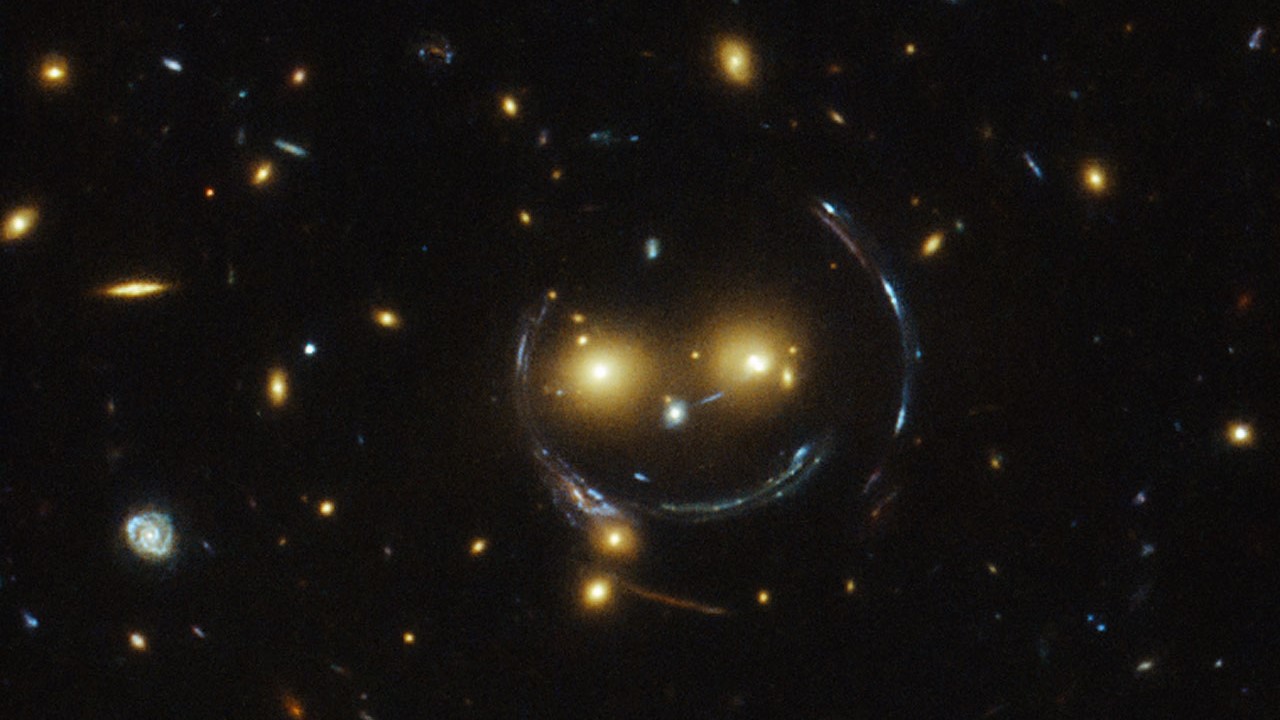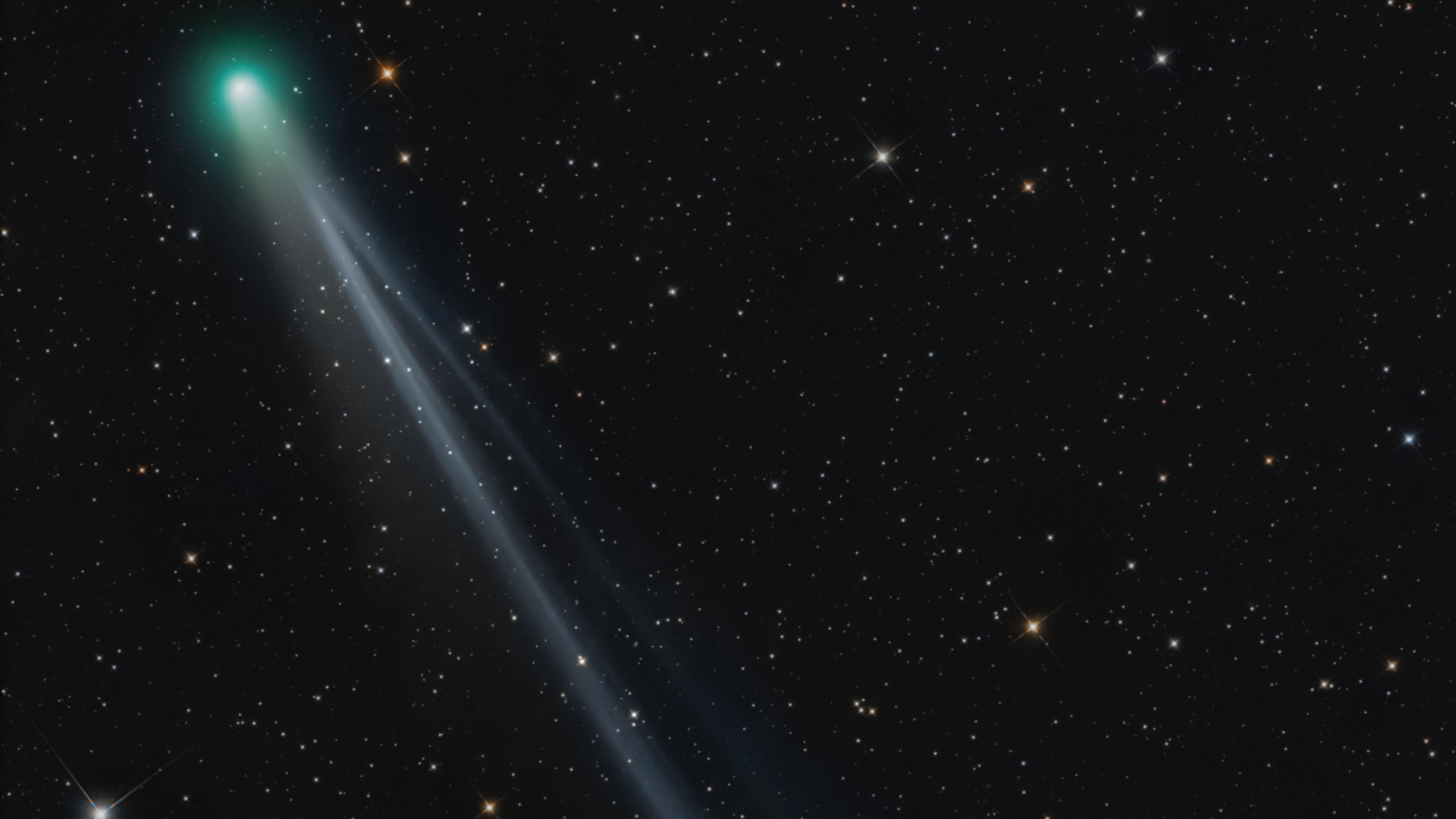The hunt for wormholes: How scientists look for space-time tunnels
Wormholes, a science fiction staple, might be real after all.


This article is brought to you by All About Space.
All About Space magazine takes you on an awe-inspiring journey through our solar system and beyond, from the amazing technology and spacecraft that enables humanity to venture into orbit, to the complexities of space science.
Wormholes — shortcuts in space and time — have long been a staple of science fiction. But some scientists believe we may soon be able to prove that they are a real part of the universe—as real as the sun and the stars or you and I. The scientific term for this exotic object is an Einstein-Rosen bridge, which is a clue as to where the idea came from.
Wormholes are rooted in Albert Einstein's general theory of relativity — his groundbreaking masterpiece that turned our ideas about gravity on their head. For centuries we thought we knew how gravity worked, thanks to Isaac Newton. Apples fell to the ground, and Earth stayed in orbit around the sun because of a gravitational pull between the objects. Yet Einstein saw it differently, suggesting that what we experience as gravity is simply a bending of space and time. Under this radical new regime, Earth orbits the sun because our star's mass warps the space around it, much like a bowling ball would warp a bed sheet if it were placed in the center of it. Our planet is simply following the local curvature of this fabric, which Einstein called 'space-time'.
Such a crazy idea was in dire need of experimental evidence to back it up. Crucially, a solar eclipse in 1919 offered just such an opportunity. When the moon blocked out the sun, it was dark enough to see stars close by. Yet we don't see these stars where they really are because the sun's gravity bends their light on its way to us. Newton and Einstein's competing pictures of gravity predicted different amounts of bending, allowing us to see who was right. Einstein came out on top: Massive objects do indeed bend the space-time around them.
What is a wormhole? Space-time tunnels explained
Imagine space as a vast sheet of paper. You live at one end and you want to travel to the other end. Ordinarily you'd have to trudge across the entire length of the page to get there. But what if you folded the paper in half instead? Suddenly, where you are and where you want to be are right next to each other. You simply have to jump that tiny gap. We call these objects wormholes because it is like a worm trying to navigate its way around an apple. To get from the top to the bottom it has two choices: Crawl around the outside, or chew a shortcut through the middle.
Until recently our chances of finding these objects — if they even exist — were slim at best. But that changed in February 2016 when the scientists behind the LIGO (Laser Interferometer Gravitational-Wave Observatory) experiment announced the first-ever detection of gravitational waves. These are tiny ripples in the fabric of space-time, predicted by general relativity, which spread out through the universe much like ripples on a pond. "It was a game-changer," says Vitor Cardoso, a physicist at the University of Lisbon in Portugal.
Two black holes — each about 30 times more massive than the sun — had rammed into each other 1.3 billion years ago. Their violent crash sent a tsunami of gravitational waves roaring out through space-time, eventually reaching the LIGO instrument in September 2015.
Cardoso's research suggests that two colliding wormholes would produce a similar burst of gravitational waves. Excitingly, however, he says the resulting waves would be slightly different, allowing us to distinguish between black holes and wormholes.
Breaking space news, the latest updates on rocket launches, skywatching events and more!
The key here is what's known as the 'ringdown '— the way in which the gravitational waves die away after the initial collision. It's similar to the way the sound of a ringing bell fades over time. "With two colliding wormholes you would see the ringdown—just like you see for black holes—but if your detector is very sensitive then seconds, or tens of seconds, after the main burst you would see something different," he says. This is due to the nature of black holes—gravitational Goliaths that swallow anything that gets too close. The ringdown of colliding black holes always gets quieter, quickly fading away to silence. But with colliding wormholes, after the silence you get an echo—a sudden, late signal as the gravitational waves bounce off the wormholes' surface. You can't get that with black holes as they swallow everything.
Unfortunately, LIGO currently isn't sensitive enough to pick up these late changes. However, researchers are upgrading LIGO's instruments, and it could be possible in "ten years from now or so," Cardoso says. Another exciting project on the horizon is the European Space Agency's (ESA's) Laser Interferometer Space Antenna (LISA). This is a gravitational-wave observatory in space that has a tentative launch date of 2034. However, in 2015 the ESA launched LISA Pathfinder—a test mission to develop certain key technologies that are vital for LISA's success. In April 2016, the ESA announced that LISA Pathfinder had indeed shown that LISA was feasible.
But ringdowns of collisions might not be the only route to finding a wormhole. Diego Rubiera-Garcia, Cardoso's former colleague at the University of Lisbon, has another idea. He's been studying what goes on deep inside a black hole. The conventional picture of black holes, as described by general relativity, has all the infalling mass squeezed down into an infinitely small, infinitely dense point—a singularity. "Any observer who approaches this point is destroyed," says Rubiera-Garcia. "After that you will disappear from space-time… there is nowhere else for you to go." It is at this singularity that general relativity breaks down—its equations stop making sense. This leaves many physicists confident that we need a new set of rules to replace general relativity in such an extreme environment.
And that's where wormholes come in. When Rubiera-Garcia applied one of the alternative sets of rules to the physics of black holes, the singularity disappeared, and the mathematics yielded a wormhole in its place. "Then it would be possible for an observer to go through this wormhole and cross to another region of the universe," he says. The trouble is that this shortcut through the cosmos might just be a phantom of the math: The alternative to general relativity that Rubiera-Garcia used to find it might not be how our universe really works. As with all good scientific theories, it needs to be tested, just as Einstein's was in 1919. That's where gravitational waves come back in.
Once we have built up a significant library of gravitational-wave detections, we can trawl through the data looking for departures from what general relativity predicts we should see. If these departures are found—and they match what the alternative theory predicts—it could signify that wormholes do indeed lurk inside black holes. The first detection of gravitational waves has ushered in a new era, one in which we may well find out that wormholes aren't just science fiction after all.
Where scientists think wormholes might exist
Center of the Milky Way
In 2015 Italian researchers suggested there could be a wormhole lurking in the center of the Milky Way some 27,000 light-years away. Ordinarily, a wormhole would need some exotic matter to keep it open, but researchers believe dark matter might be doing the job.
Quantum foam
Even empty space isn't truly empty—on the smallest scales it is a cauldron of bubbling energy popping in and out of existence. Some think fleeting virtual black holes may be being created all the time in this 'quantum foam'. However, we'd need a lot of energy if we wanted to make one permanent.
Inside a black hole
Rather than having a singularity at the center, as general relativity predicts, some researchers believe we'd find a wormhole. However, the jury is still out on whether it would be big enough for a human to traverse.
How do we know if we've found a wormhole?
Gravitational-wave ringdown echo
The gravitational waves from colliding black holes die away very quickly, but two colliding wormholes would produce an echo detectable with the next generation of experiments.
Microlensing
If a wormhole passed in front of a distant star, it would bend the star's light slightly in an event called 'microlensing'. This technique has already been used to find rogue planets.
Heading into one
Some scientists believe that black holes are actually wormholes in disguise. It's a risky endeavor, but sending something into one would let us know for certain if wormholes really do exist.
Follow us on Twitter @Spacedotcom or Facebook.
Join our Space Forums to keep talking space on the latest missions, night sky and more! And if you have a news tip, correction or comment, let us know at: community@space.com.

Colin Stuart is an award-winning astronomy author, speaker and tutor based in the UK. His popular science books have sold over 400,000 copies worldwide and have been translated into 21 languages. The asteroid (15347) Colinstuart is named after him and he runs an online Astrophysics for Beginners course and a science writing course.






